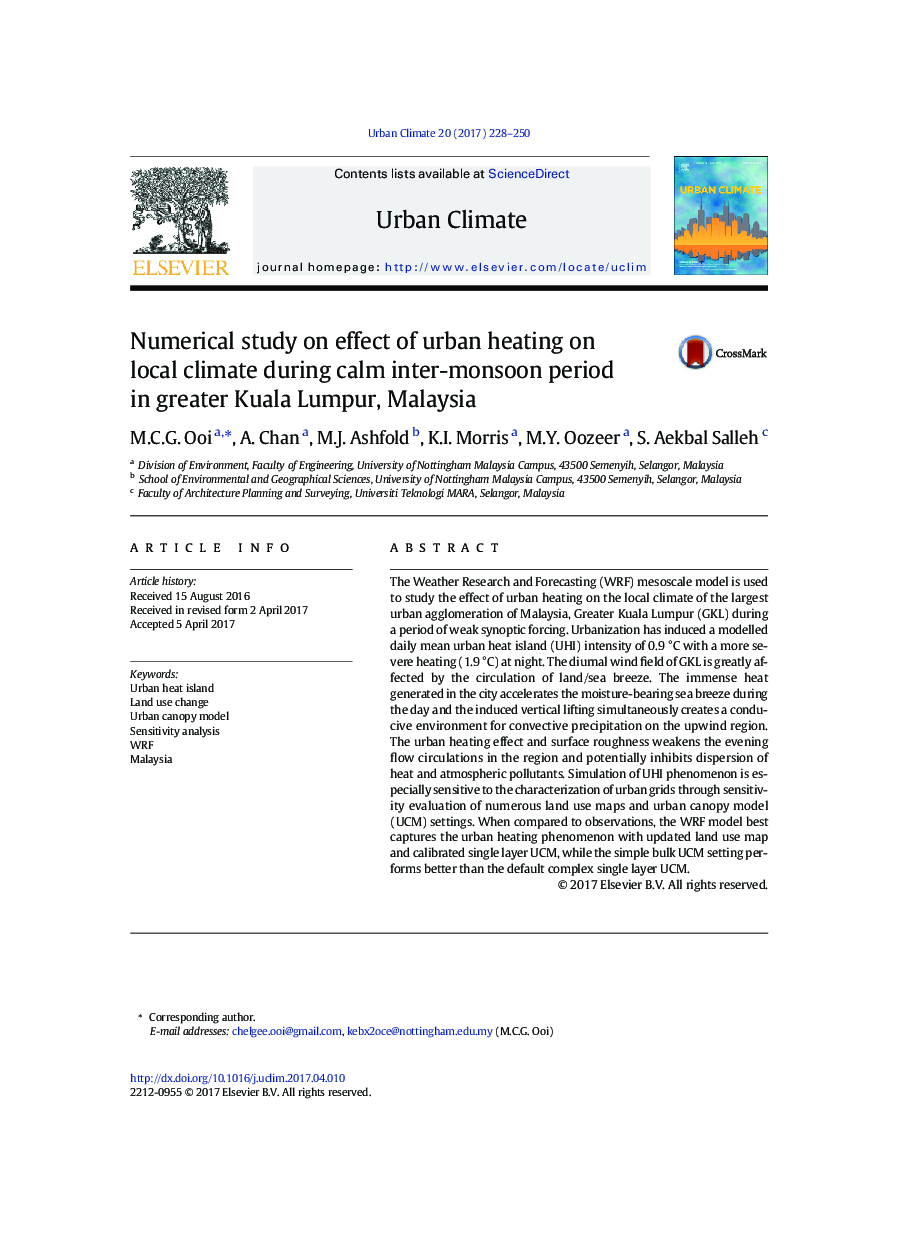| کد مقاله | کد نشریه | سال انتشار | مقاله انگلیسی | نسخه تمام متن |
|---|---|---|---|---|
| 6464505 | 1422843 | 2017 | 23 صفحه PDF | دانلود رایگان |
- Urbanization induces wetter upwind coastal region during the day and stronger urban heat up to 1.9 °C at night.
- Urbanization causes the late retreat of sea breeze and weakened land breeze during the evening which further inhibits the heat dissipation in urban.
- Observed urban heat is reproduced with updated land use map and single layer UCM with locally calibrated urban parameters.
- The correct identification of urban fraction improves the model performance more than specification of UCM parameters.
The Weather Research and Forecasting (WRF) mesoscale model is used to study the effect of urban heating on the local climate of the largest urban agglomeration of Malaysia, Greater Kuala Lumpur (GKL) during a period of weak synoptic forcing. Urbanization has induced a modelled daily mean urban heat island (UHI) intensity of 0.9 °C with a more severe heating (1.9 °C) at night. The diurnal wind field of GKL is greatly affected by the circulation of land/sea breeze. The immense heat generated in the city accelerates the moisture-bearing sea breeze during the day and the induced vertical lifting simultaneously creates a conducive environment for convective precipitation on the upwind region. The urban heating effect and surface roughness weakens the evening flow circulations in the region and potentially inhibits dispersion of heat and atmospheric pollutants. Simulation of UHI phenomenon is especially sensitive to the characterization of urban grids through sensitivity evaluation of numerous land use maps and urban canopy model (UCM) settings. When compared to observations, the WRF model best captures the urban heating phenomenon with updated land use map and calibrated single layer UCM, while the simple bulk UCM setting performs better than the default complex single layer UCM.
Journal: Urban Climate - Volume 20, June 2017, Pages 228-250
